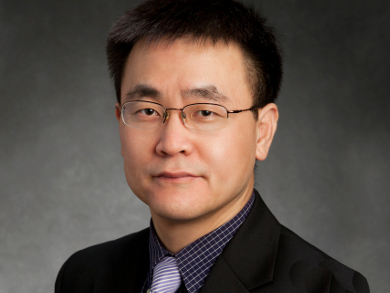Dr. Claire M. Cobley, Associate Editor for ChemNanoMat, talks to Professor Hong Yang, University of Illinois-Urbana Champaign, USA, about his article on self-heating nanocrystal syntheses that was recently published in ChemNanoMat.
His group developed a method to synthesize metal nanocrystals that is powered by heat generated in situ by exothermic reactions between carboxylic acid and amine compounds. This self-heating method could be used to generate gold and palladium nanocrystals with uniform morphologies, such as gold nanowires and concave palladium tetrahedra.
Why was your attention focused on self-heating reactions?
Using surfactants such as long carbon-chain amines and carboxylic acids is somewhat the norm in the modern-day synthesis of nanoparticles of metals, oxides, and quantum dots with a high level of control. Oleic acid and olylamine are among the most popular pairs of surfactants. Yet, surprisingly, there is no publication that systematically explores the use and effect of heat release from the reactions between these two molecules. Our work in ChemNanoMat finally examines how this reaction heat contributes to the formation of a range of uniform nanostructures.
How did you become interested in metal nanomaterials?
Metal nanomaterials have a range of important industrial applications. I became interested in metal alloy nanoparticles first because of their applications in data storage, and later as electrocatalysts for hydrogen fuel cells used in hybrid vehicles and other areas.
What is the main significance of your results?
The method we developed can produce nanoparticles in minutes and without any heating device. Nanowires, capped wires and particles of metals have all been made. Thus, it is also versatile. This method has some of the important attributes desirable for manufacture of metal nanomaterials.
Could you briefly explain the focus and findings of your article and why it is of current interest?
This article presents a facile approach to rapidly generate high-quality metal nanowires and dots without the use of heating devices and exotic chemicals. These types of metal nanomaterials may find different applications from catalysts for sustainable energy to materials in touch screen displays.
What is the longer-term vision for your research?
We think this synthetic approach has the potential to be developed into a production method for a variety of metals and nanostructures such as long nanowires, uniform dots, and the like. My group would like to emphasize this direction in the future.
- Self-Heating Approach to the Fast Production of Uniform Metal Nanostructures,
Xi Yin, Jianbo Wu, Panpan Li, Miao Shi, Hong Yang,
ChemNanoMat 2015.
DOI: 10.1002/cnma.201500123




